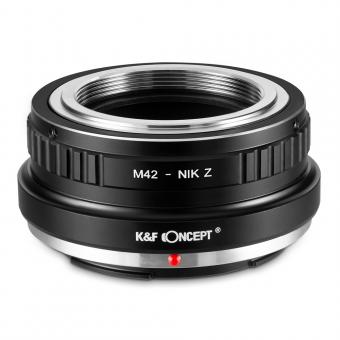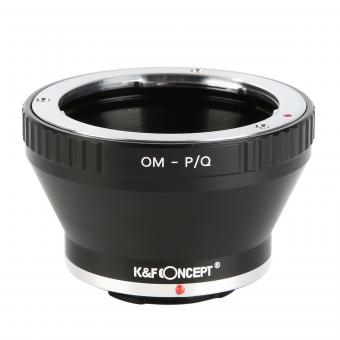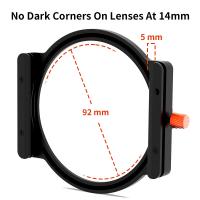What Are The Different Microscopes ?
There are several types of microscopes, including optical microscopes, electron microscopes, scanning probe microscopes, and X-ray microscopes. Optical microscopes use visible light to magnify objects and are commonly used in biology and materials science. Electron microscopes use beams of electrons to create high-resolution images and are used in fields such as materials science, biology, and nanotechnology. Scanning probe microscopes use a physical probe to scan the surface of a sample and create images with atomic-scale resolution. X-ray microscopes use X-rays to create images of samples and are used in materials science and biology. Each type of microscope has its own strengths and limitations, and the choice of microscope depends on the specific application and the level of detail required.
1、 Compound microscope
The compound microscope is one of the most commonly used microscopes in the field of biology. It is a type of optical microscope that uses two or more lenses to magnify an object. The compound microscope has been around for centuries and has undergone many improvements over time. Today, there are several different types of compound microscopes available, each with its own unique features and capabilities.
One of the most common types of compound microscopes is the brightfield microscope. This type of microscope uses a white light source to illuminate the specimen, and the image is viewed through the eyepiece. Brightfield microscopes are ideal for viewing stained specimens, such as bacteria or tissue samples.
Another type of compound microscope is the phase contrast microscope. This type of microscope uses a special condenser and objective lens to create contrast between the specimen and the surrounding medium. Phase contrast microscopes are ideal for viewing live cells and other transparent specimens.
Fluorescence microscopes are another type of compound microscope that use fluorescent dyes to label specific structures within a specimen. This type of microscope is commonly used in the field of molecular biology to study the localization and movement of proteins within cells.
In recent years, advances in technology have led to the development of new types of compound microscopes, such as the confocal microscope and the super-resolution microscope. These microscopes use advanced imaging techniques to provide higher resolution and more detailed images of specimens.
Overall, the compound microscope remains an essential tool in the field of biology, and the development of new technologies continues to expand its capabilities and applications.
2、 Stereo microscope
One of the most commonly used microscopes is the stereo microscope, also known as a dissecting microscope. This type of microscope is designed to provide a three-dimensional view of the specimen being observed. It is commonly used in fields such as biology, geology, and electronics.
The stereo microscope uses two separate optical paths to provide a stereoscopic image of the specimen. This allows for a more detailed view of the specimen, as well as the ability to observe it from different angles. The stereo microscope is also designed to provide a larger field of view than other types of microscopes, making it easier to observe larger specimens.
In recent years, there have been advancements in the technology used in stereo microscopes. For example, some models now come equipped with digital cameras, allowing for images and videos to be captured and shared with others. Additionally, some models now feature LED lighting, which provides a brighter and more consistent light source than traditional halogen bulbs.
Overall, the stereo microscope remains a valuable tool in scientific research and observation. Its ability to provide a three-dimensional view of specimens makes it an essential tool in fields such as biology and geology, and its recent technological advancements have only made it more useful.
3、 Electron microscope
There are several types of microscopes available for scientific research, each with its own unique features and capabilities. One of the most powerful and widely used microscopes is the electron microscope.
The electron microscope uses a beam of electrons instead of light to magnify objects. This allows for much higher magnification and resolution than traditional light microscopes. There are two main types of electron microscopes: transmission electron microscopes (TEM) and scanning electron microscopes (SEM).
TEMs use a thin sample that is placed on a grid and then bombarded with electrons. The electrons pass through the sample and are focused onto a screen or detector, creating an image of the sample's internal structure. SEMs, on the other hand, use a beam of electrons to scan the surface of a sample, creating a 3D image of its surface features.
In recent years, advancements in electron microscopy have led to the development of cryo-electron microscopy (cryo-EM). This technique involves freezing samples in liquid nitrogen and then imaging them with an electron microscope. Cryo-EM has revolutionized the field of structural biology, allowing researchers to study the structure of proteins and other biomolecules at near-atomic resolution.
Overall, electron microscopes are powerful tools for scientific research, allowing researchers to study the structure and function of materials and biological samples at the nanoscale.
4、 Scanning probe microscope
There are several types of microscopes used in scientific research, each with its own unique capabilities and limitations. One such microscope is the scanning probe microscope (SPM), which is used to study the surface of materials at the nanoscale level.
SPMs work by scanning a tiny probe over the surface of a sample, measuring the interaction between the probe and the sample to create a detailed image of the surface. There are several different types of SPMs, including atomic force microscopes (AFMs), scanning tunneling microscopes (STMs), and magnetic force microscopes (MFMs).
AFMs use a tiny cantilever with a sharp tip to scan the surface of a sample, measuring the forces between the tip and the sample to create an image. STMs work by passing a tiny current through a sharp tip, which is then scanned over the surface of a sample to measure the electrical properties of the surface. MFMs use a magnetic tip to scan the surface of a sample, measuring the magnetic properties of the surface.
The latest point of view on SPMs is that they are becoming increasingly important in the field of nanotechnology, as they allow researchers to study and manipulate materials at the atomic and molecular level. SPMs are also being used in a wide range of applications, from studying the properties of materials for use in electronics and energy storage to developing new drugs and medical devices.
Overall, SPMs are a powerful tool for studying the nanoscale world, and their continued development and use will likely lead to many new discoveries and innovations in the years to come.




































